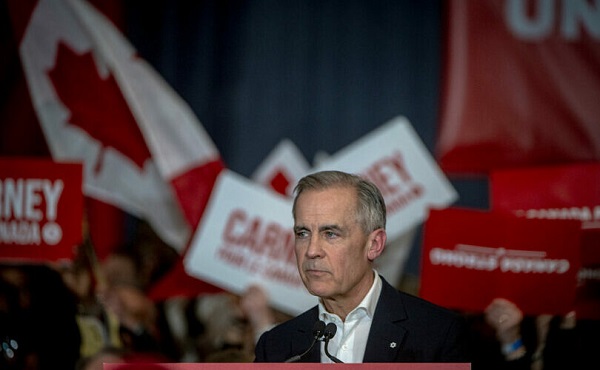Alberta
Albertans still waiting for plan to grow the Heritage Fund

From the Fraser Institute
By Tegan Hill
In February 2024, the Smith government promised to share a plan to grow the Heritage Fund—Alberta’s long-term resource revenue savings fund—with the public before the end of 2024. But 2025 is upon us, and Albertans are still waiting.
The Lougheed government originally created the Heritage Fund in 1976/77 to save a share of the province’s resource wealth, including oil and gas revenues, for the future. But since its creation, Alberta governments have deposited less than 4 per cent of total resource revenue in the fund.
In other words, for decades successive Alberta governments have missed a golden opportunity. When governments make deposits in the Heritage Fund, they transform onetime (and extremely volatile) resource revenue into a financial asset that can generate more stable earnings over time. Eventually, the government could use annual income from the fund to replace volatile resource revenue in the budget.
Historically, however, rules that would have helped ensure the fund’s growth (for example, a requirement to deposit 30 per cent of resource revenue annually) were “statutory” rather than “constitutional,” which meant Alberta governments could easily disregard, change or eliminate these rules once they were no longer convenient.
And they did. The government changed that 30 per cent requirement to 15 per cent by 1982/83, and after an oil price collapse, eliminated it entirely in 1987/88. Due to a lack of consistent deposits, paired with the real value of the fund eroding over time due to inflation, and nearly all fund earnings being spent, the Heritage Fund is expected to be worth less than $25 billion in 2024/25.
Again, while Premier Smith has promised to grow the fund to between $250 billion to $400 billion by 2050, we’ve yet to see how she plans to do that. Whatever plan the government produces, it should heed lessons from other successful resource revenue savings fund such as Alaska’s Permanent Fund.
The Alaska government created its fund the same year Alberta created the Heritage Fund, but Alaska’s fund is worth roughly US$80 billion (or C$113 billion) today. What has the Alaska government done differently?
First, according to Alaska’s constitution, the state government must deposit 25 per cent of all mineral revenues into the fund each year. This type of “constitutional” rule is much stronger than a “statutory” rule that existed in Alberta. (While Canada does not have separate provincial constitutions, it’s possible to change Canada’s Constitution for province-specific measures.) Second, the Alaska government must set aside a share of the fund’s earnings each year to offset the effects of inflation—in other words, “inflation-proof” the principal of the fund to preserve its real value. And finally, the government must pay a portion of fund earnings to Alaskan citizens in annual dividends.
The logic of the first two rules is simple—the Alaskan government promotes growth in the fund by depositing mineral revenue annually, and inflation-proofing maintains the fund’s purchasing power. But consider the third rule regarding dividends.
The Alaska government created the annual dividend, paid out annually to Alaskans, to create political pressure for future governments to responsibly maintain the fund. Because citizens have an ownership share in the fund, they’re more interested in the state maximizing returns from its resource wealth. This has helped maintain and reinforce robust fiscal rules that make the Permanent Fund successful.
Based on this success, if the Smith government began contributing 25 per cent of resource revenue to the Heritage Fund and inflation-proofed the principal, it could pay each Albertan a total dividend between roughly $600 to $1,100 from 2024/25 to 2026/27, or roughly $2,300 to $4,400 per family of four. And as the fund grows, so would the dividends.
Almost one year ago, the Smith government promised a new plan for the Heritage Fund. When the plan is finally released, it should include a constitutional requirement for consistent contributions and inflation-proofing, and annual dividends for Albertans.
Alberta
Alberta takes big step towards shorter wait times and higher quality health care

From the Fraser Institute
On Monday, the Smith government announced that beginning next year it will change the way it funds surgeries in Alberta. This is a big step towards unlocking the ability of Alberta’s health-care system to provide more, better and faster services for the same or possibly fewer dollars.
To understand the significance of this change, you must understand the consequences of the current (and outdated) approach.
Currently, the Alberta government pays a lump sum of money to hospitals each year. Consequently, hospitals perceive patients as a drain on their budgets. From the hospital’s perspective, there’s little financial incentive to serve more patients, operate more efficiently and provide superior quality services.
Consider what would happen if your local grocery store received a giant bag of money each year to feed people. The number of items would quickly decline to whatever was most convenient for the store to provide. (Have a favourite cereal? Too bad.) Store hours would become less convenient for customers, alongside a general decline in overall service. This type of grocery store, like an Alberta hospital, is actually financially better off (that is, it saves money) if you go elsewhere.
The Smith government plans to flip this entire system on its head, to the benefit of patients and taxpayers. Instead of handing out bags of money each year to providers, the new system—known as “activity-based funding”—will pay health-care providers for each patient they treat, based on the patient’s particular condition and important factors that may add complexity or cost to their care.
This turns patients from a drain on budgets into a source of additional revenue. The result, as has been demonstrated in other universal health-care systems worldwide, is more services delivered using existing health-care infrastructure, lower wait times, improved quality of care, improved access to medical technologies, and less waste.
In other words, Albertans will receive far better value from their health-care system, which is currently among the most expensive in the world. And relief can’t come soon enough—for example, last year in Alberta the median wait time for orthopedic surgeries including hip and knee replacements was 66.8 weeks.
The naysayers argue this approach will undermine the province’s universal system and hurt patients. But by allowing a spectrum of providers to compete for the delivery of quality care, Alberta will follow the lead of other more successful universal health-care systems in countries such as Australia, Germany, the Netherlands and Switzerland and create greater accountability for hospitals and other health-care providers. Taxpayers will get a much better picture of what they’re paying for and how much they pay.
Again, Alberta is not exploring an untested policy. Almost every other developed country with universal health care uses some form of “activity-based funding” for hospital and surgical care. And remember, we already spend more on health care than our counterparts in nearly all of these countries yet endure longer wait times and poorer access to services generally, in part because of how we pay for surgical care.
While the devil is always in the details, and while it’s still possible for the Alberta government to get this wrong, Monday’s announcement is a big step in the right direction. A funding model that puts patients first will get Albertans more of the high-quality health care they already pay for in a timelier fashion. And provide to other provinces an example of bold health-care reform.
Alberta
Alberta’s embrace of activity-based funding is great news for patients

 From the Montreal Economic Institute
From the Montreal Economic Institute
Alberta’s move to fund acute care services through activity-based funding follows best practices internationally, points out an MEI researcher following an announcement made by Premier Danielle Smith earlier today.
“For too long, the way hospitals were funded in Alberta incentivized treating fewer patients, contributing to our long wait times,” explains Krystle Wittevrongel, director of research at the MEI. “International experience has shown that, with the proper funding models in place, health systems become more efficient to the benefit of patients.”
Currently, Alberta’s hospitals are financed under a system called “global budgeting.” This involves allocating a pre-set amount of funding to pay for a specific number of services based on previous years’ budgets.
Under the government’s newly proposed funding system, hospitals receive a fixed payment for each treatment delivered.
An Economic Note published by the MEI last year showed that Quebec’s gradual adoption of activity-based funding led to higher productivity and lower costs in the province’s health system.
Notably, the province observed that the per-procedure cost of MRIs fell by four per cent as the number of procedures performed increased by 22 per cent.
In the radiology and oncology sector, it observed productivity increases of 26 per cent while procedure costs decreased by seven per cent.
“Being able to perform more surgeries, at lower costs, and within shorter timelines is exactly what Alberta’s patients need, and Premier Smith understands that,” continued Mrs. Wittevrongel. “Today’s announcement is a good first step, and we look forward to seeing a successful roll-out once appropriate funding levels per procedure are set.”
The governments expects to roll-out this new funding model for select procedures starting in 2026.
* * *
The MEI is an independent public policy think tank with offices in Montreal, Ottawa, and Calgary. Through its publications, media appearances, and advisory services to policymakers, the MEI stimulates public policy debate and reforms based on sound economics and entrepreneurship.
-

 2025 Federal Election2 days ago
2025 Federal Election2 days agoAn In-Depth Campaign Trail “Interview” With Pierre Poilievre
-

 2025 Federal Election2 days ago
2025 Federal Election2 days agoHarper Endorses Poilievre at Historic Edmonton Rally: “This Crisis Was Made in Canada”
-

 John Stossel1 day ago
John Stossel1 day agoGovernment Gambling Hypocrisy: Bad Odds and No Competition
-

 2025 Federal Election2 days ago
2025 Federal Election2 days agoMark Carney pledges another $150 million for CBC ahead of federal election
-

 Alberta1 day ago
Alberta1 day agoAlberta’s embrace of activity-based funding is great news for patients
-

 2025 Federal Election2 days ago
2025 Federal Election2 days agoWATCH: Massive Crowd for Historic Edmonton Poilievre Rally
-

 2025 Federal Election24 hours ago
2025 Federal Election24 hours agoCommunist China helped boost Mark Carney’s image on social media, election watchdog reports
-

 2025 Federal Election2 days ago
2025 Federal Election2 days agoMark Carney’s radical left-wing, globalist record proves he is Justin Trudeau 2.0











